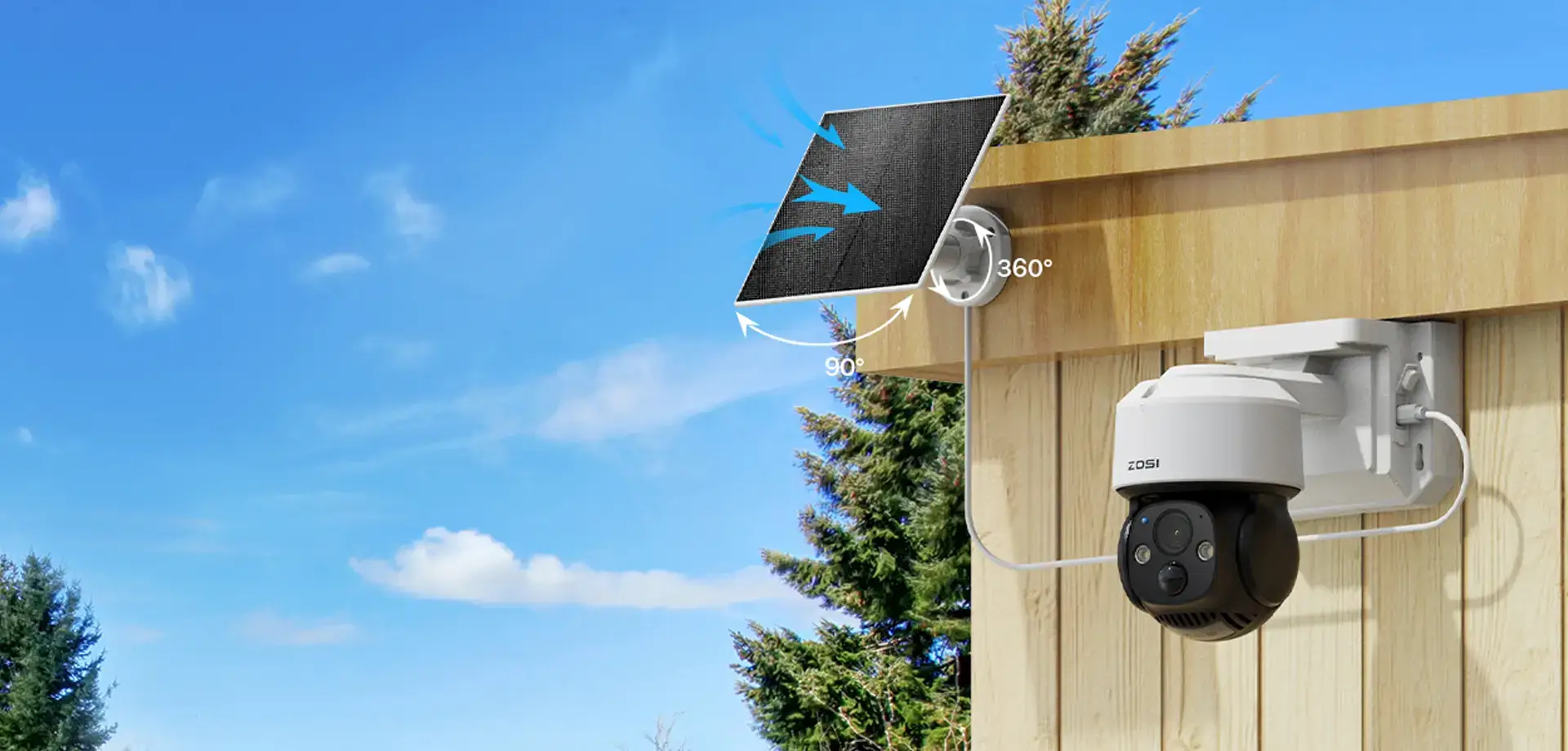When living in areas with very cold winters or hot summers, your video surveillance system or wireless outdoor security cameras might suffer if they’re not designed to operate in sub-zero cold weather or extreme heat.
Additionally, there are various weather conditions and elements that your outdoor cameras need protection from.
Solutions:
To begin with, check the outdoor security camera housing’s IP (ingress protection) rating, which indicates its ability to withstand elements.
For example, an outdoor surveillance camera with an IP rating of 66 can withstand impacts from solid matter like dust and liquid-like rainwater, rendering it completely waterproof.
Moreover, check the camera’s working temperature, either for CCTV or network IP cameras.
Many outdoor home security cameras, such as ZOSI 1NC-291 outdoor wire-free security cameras, typically operate in temperatures ranging from -20°C to +50°C (-4°F to 122°F) with humidity levels less than 90%.
4MP Wireless Battery Powered PT Secrity Camera - 1NC-291
- 4MP Super HD
- Long Battery Life
- Customize PIR Alert
- 360° HD View
- Flexible Mounting
- Enhanced Night Vision
You can also get a separate security camera rain cover, housing, box, or enclosure to protect outdoor home security cameras (wireless or wired) from rainwater, snow, dust, heat, and other elements.
When wiring up outdoor cameras (PoE or CCTV) outdoors on a pole, deck, pier, or other outdoor locations, cables and connectors should be waterproofed using waterproof lip cable connectors or plastic conduits. For outdoor cables, durable and outdoor-rated cables such as gel-filled Ethernet cables are great for PoE IP cameras.
Another way to protect security camera wires from rain is to use junction boxes to conceal the cables and connectors from sight.
If you choose not to use conduits or junction boxes, remember to conceal the holes as well, or else moisture may run along the surface of the electrical cable and get into the electrical connection points, resulting in costly repairs and significant trouble.
To cover security camera wire holes in the wall, you can fill the holes with waterproof materials like silicone and duct seal or use waterproof outdoor covers or feed-through bushings to conceal them.
Additionally, in extremely cold weather, it’s essential to inspect the camera enclosure for moisture or condensation and ensure there are no issues. You can also put a packet of silica gel inside the housing case to protect cables and connectors from frost or snow by regularly examining them and ensuring they’re in good shape.
Follow these practical tips to run outdoor CCTV cameras in extreme cold areas.
Read also: 8 Expert Strategies to Protect Outdoor Security Cameras
